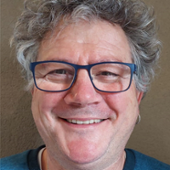Agenda
Day 1, 11 May
Timings are in BST (British Summer Time)
-
Moderator: Dave Dillon, Senior Regulatory and Compliance Analyst, Chemical Watch, UK
-
Welcome and introduction
- Session 1: Overviews
-
European Commission overview
-
Echa updates and developments
-
Member state overview
 Nicole van Straten
Manager Scientific Assessment and Advice, Dutch Board for the Authorisation of Plant Protection Products and Biocides (Ctgb)
Nicole van Straten
Manager Scientific Assessment and Advice, Dutch Board for the Authorisation of Plant Protection Products and Biocides (Ctgb) -
Industry feedback on the implementation of the BPR
 Elodie Cazelle
Senior Scientific and Regulatory Affairs Manager, International Association for Soaps, Detergents and Maintenance Products, A.I.S.E.
Elodie Cazelle
Senior Scientific and Regulatory Affairs Manager, International Association for Soaps, Detergents and Maintenance Products, A.I.S.E. -
Q&A and panel discussion
-
Break
- Session 2: Biocides enforcement
-
Updates from the BPR subgroup of the Forum (BPRS) and BEF2
 Eugen Anwander
Senior Scientific Officer, Institute for Environment and Food Safety, Vorarlberg State Service, Austria & Vice-chair of Echa BPR Enforcement Forum, Finland
Eugen Anwander
Senior Scientific Officer, Institute for Environment and Food Safety, Vorarlberg State Service, Austria & Vice-chair of Echa BPR Enforcement Forum, Finland -
Biocides enforcement in the Netherlands
- Legislative framework
- Division of responsibilities
- Enforcement organisation(s)
- Enforcement tools
- Enforcement reality in the Netherlands
- some figures and examples
- Developments
- Wishful thinking from an enforcement point of view
-
Interaction with the UK authorities, including authorisation and enforcement aspects
- Routes to market
- Key processes
- Case examples
- Challenges
- How regulatory authorities approach enforcement in the UK
- What to do if you are selected for inspection/investigation
- Hot topics
-
BPR enforcement and Italian national legislation
- Domestic BPR enforcement: Italian decree 179/2021 – short description and comment
- Use of criminal law by the domestic implementing regime
- Existing domestic disinfectants legislation: a permanent parallel regime to certain authorised biocidal products
- Final evaluations
-
Q&A and panel discussion
-
Lunch and Chemical Watch demo 13.40-14.10
- Session 3: Regulatory processes
-
Biocidal product family (BPF) authorisation in Germany: between the lines, essentials and pitfalls
- Purpose of the BPF definition
- Overall authorisation process for BPFs in Germany
- Differences between biocidal product (BP) and BPF assessment highlighting the reasons behind certain approaches
 Thilo Walther
Scientific Officer, Federal Institute for Occupational Safety and Health Federal Office for Chemicals
Thilo Walther
Scientific Officer, Federal Institute for Occupational Safety and Health Federal Office for Chemicals -
Biocidal product families with quats: opportunities and challenges
- Quats are likely to be big families because many products on the market are similar and have similar uses
- Possible challenges for these families:
-
- Identification of a backbone composition
- Complicated grouping strategy
- Presence of co-formulants with a biocidal function
- Similarity
- Definition of a worst-case scenario for efficacy
-
Current and future status of regulations for antifouling coatings globally
- How are antifouling coatings regulated?
- Balance with the goals and regulations for effective biofouling control
- Global, regional and country regulations
- Recent environmental concerns
- Trends and the future of antifouling and biofouling regulations
Authors Neal Blossom (presenter) and Dr Colin Anderson
 Neal Blossom
Director of Quality Assurance and Global Regulatory Affairs, American Chemet Corporation, Chairman of the American Chemistry Council Copper Antimicrobial Task Force
Neal Blossom
Director of Quality Assurance and Global Regulatory Affairs, American Chemet Corporation, Chairman of the American Chemistry Council Copper Antimicrobial Task Force -
Q&A and panel discussion
-
Break
- Session 4: Efficacy updates
-
PT 19 efficacy guidance update: highlights of significant changes and applicability
- Why a separate chapter for PT 19 efficacy assessment?
- What is new for PT 19 efficacy assessment?
- What does the future hold for PT 19 efficacy assessment?
-
Emerging CEN methods, updates to Echa EFF guidance and and Ecolab experience of efficacy portion of BPF
- Overview of new methods under recent development within CEN
- Overview of upcoming guidance from Echa BPC EFF WG
- Brief recap of BPF efficacy approach and recent experiences from industry perspective
-
Emerging pathogens: the latest efficacy testing developments, requirements and technologies under FIFRA
- Quantitative disinfection method (QM)
- Quantitative towelette method (QTM)
- Electrostatic sprayer (ESS) guidance
- Soft surface disinfection
- Residual hard surface methods
- Brief updates – viral, C. auris, air treatment
-
Q&A and panel discussion
-
End of day 1








_opt.jpg)

_opt.jpg)

